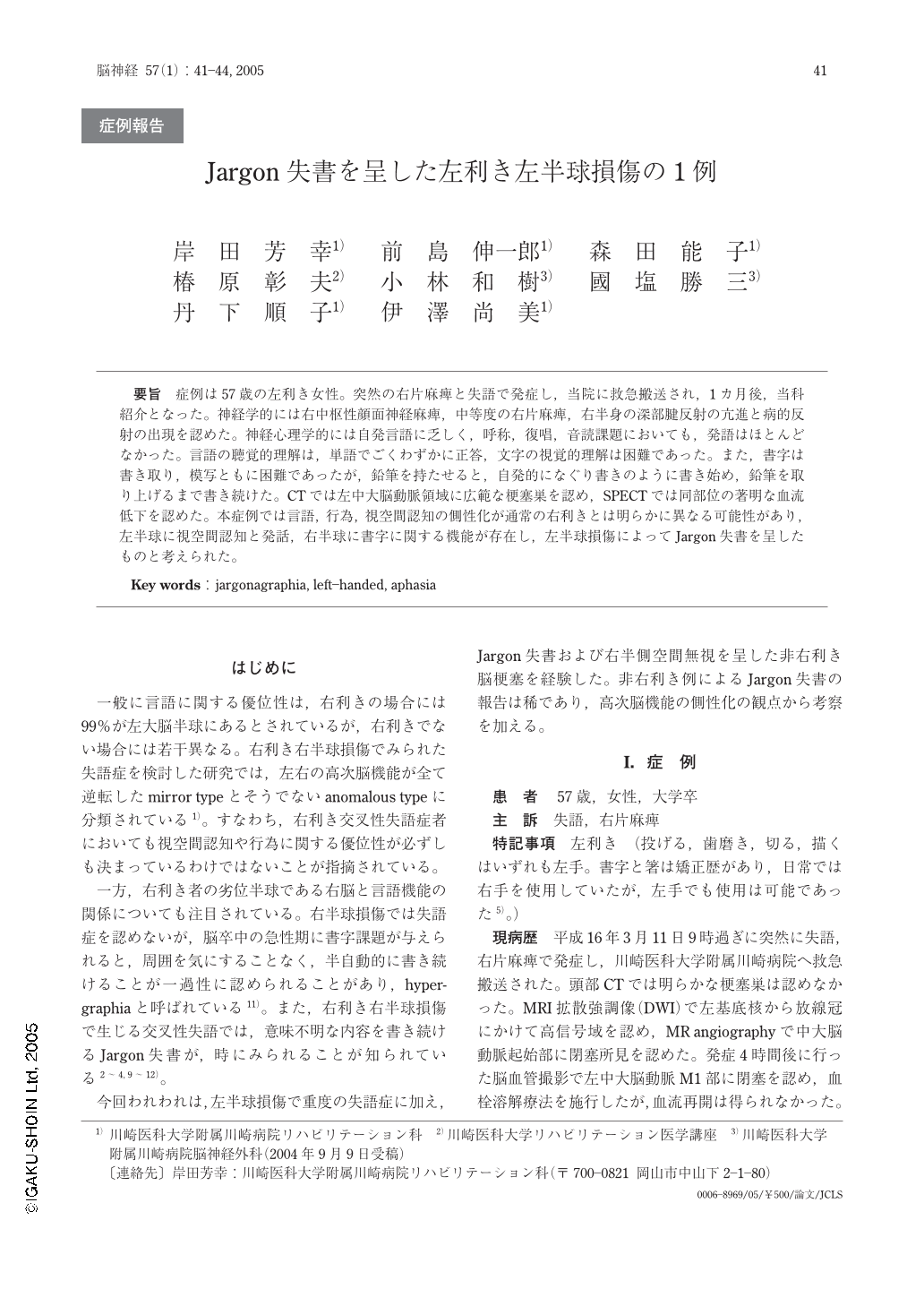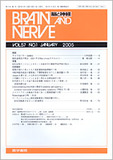Japanese
English
- 有料閲覧
- Abstract 文献概要
- 1ページ目 Look Inside
要旨 症例は57歳の左利き女性。突然の右片麻痺と失語で発症し,当院に救急搬送され,1カ月後,当科紹介となった。神経学的には右中枢性顔面神経麻痺,中等度の右片麻痺,右半身の深部腱反射の亢進と病的反射の出現を認めた。神経心理学的には自発言語に乏しく,呼称,復唱,音読課題においても,発語はほとんどなかった。言語の聴覚的理解は,単語でごくわずかに正答,文字の視覚的理解は困難であった。また,書字は書き取り,模写ともに困難であったが,鉛筆を持たせると,自発的になぐり書きのように書き始め,鉛筆を取り上げるまで書き続けた。CTでは左中大脳動脈領域に広範な梗塞巣を認め,SPECTでは同部位の著明な血流低下を認めた。本症例では言語,行為,視空間認知の側性化が通常の右利きとは明らかに異なる可能性があり,左半球に視空間認知と発話,右半球に書字に関する機能が存在し,左半球損傷によってJargon失書を呈したものと考えられた。
We report a case who developed jargonagraphia, severe aphasia and unilateral spatial neglect due to cerebral infarction in the left hemisphere. The patient was a 57 year-old left-handed woman. She suddenly developed hemiplegia on the right side and aphasia, and was admitted to our hospital. Neuropsychological examination showed non-fluent spontaneous speech. Repetition, reading and auditory comprehension were impaired. Writing was severely impaired and she showed paragraphia without meaning(jargonagraphia). Right unilateral spatial neglect and buccofacial apraxia were noted, but neither ideomotor nor ideational apraxia was observed. The mechanisms of jargonagraphia remain unknown. The localization of language function in this patient is not a mirror image of same function in dextral aphasia. Her condition was considered that free-running on motor engrams of characters stored in the right hemisphere caused jargonagraphia.
(Received : September 9, 2004)

Copyright © 2005, Igaku-Shoin Ltd. All rights reserved.


